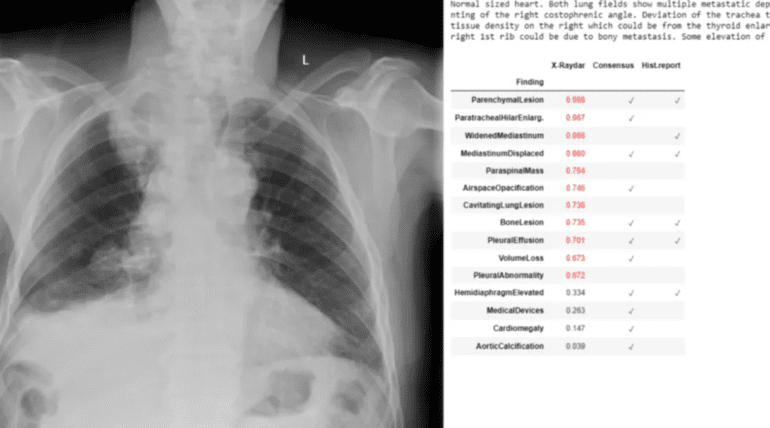TL;DR:
- AI, named X-Raydar, matches or surpasses human doctors in diagnosing 35 out of 37 medical conditions from chest X-rays.
- This AI tool offers a valuable “ultimate second opinion” for radiologists and can prioritize urgent cases.
- It eliminates human errors and biases in diagnoses, potentially reducing doctors’ workloads and diagnosis delays.
- X-Raydar’s collaboration between Warwick University, King’s College London, and the NHS is funded by the Wellcome Trust.
- The software is available open source for non-commercial use, encouraging research development.
Main AI News:
In a groundbreaking study, Artificial Intelligence (AI) has proven its mettle in the realm of medical diagnostics, reaching a level of proficiency comparable to that of human doctors. The research, spearheaded by the University of Warwick, unveils a promising future where AI can analyze X-rays with remarkable accuracy, offering a transformative second opinion for medical professionals.
The AI system, known as X-Raydar, was meticulously trained using an extensive dataset comprising chest X-rays from over 1.5 million patients, each scanned for 37 potential medical conditions. Astonishingly, the AI’s diagnostic prowess rivaled or exceeded that of human doctors in 35 out of 37 conditions at the time the X-ray images were captured.
This technological breakthrough holds the potential to not only alleviate the burden on healthcare professionals but also significantly reduce diagnosis delays. Radiologists stand to benefit from this innovation, receiving an invaluable “ultimate second opinion” from AI-powered analysis.
One of the remarkable capabilities of this AI tool is its ability to discern the severity of abnormalities detected during scans. It can prioritize the most urgent cases, providing crucial guidance to medical practitioners. The University of Warwick underscores the software’s effectiveness by conducting thorough cross-examinations of over 1,400 X-rays analyzed by the AI, verifying its accuracy against assessments made by senior radiologists at the time.
Lead author Dr. Giovanni Montana, a Professor of Data Science at Warwick University, notes that AI like X-Raydar eliminates human errors and biases that can affect medical diagnoses. He highlights the common tendency of doctors to focus on specific areas of concern, potentially overlooking issues elsewhere in the X-rays.
Professor Vicky Goh, co-author from King’s College London, describes this AI advancement as the “future of medicine.” She envisions it as a capable co-pilot, assisting busy doctors in their daily practice. This pioneering AI X-ray tool emerged from a collaborative effort between Warwick University, King’s College London, and the NHS, with funding support from the Wellcome Trust.
To expedite research development, the software has been made available as open-source for non-commercial use, emphasizing the commitment to advancing medical technology for the betterment of healthcare worldwide. This landmark study marks a significant stride toward reshaping the landscape of medical diagnostics through the power of Artificial Intelligence.
Conclusion:
This breakthrough in AI-powered X-ray analysis represents a significant leap forward in the healthcare market. X-Raydar’s remarkable diagnostic accuracy and ability to assist medical professionals promise to enhance patient care, reduce delays, and potentially reshape the role of radiologists in the future. As AI continues to prove its mettle in medical diagnostics, we can anticipate a growing demand for such technology in healthcare, paving the way for innovative solutions and improved patient outcomes.

